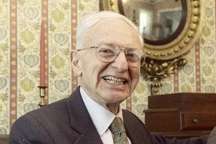Herbert Schilder
Herbert Schilder (8 September 1928[1] in Brooklyn, New York – 25 January 2006 in Newton, Massachusetts)[2] was a dental surgeon. Schilder is best known for the improvements he made to root canal therapies (endodontic therapy) in the 1960s, when he taught at the Boston University School of Dental Medicine.[2]
Doctor Herbert Schilder | |
|---|---|
 | |
| Born | September 8, 1928[1] Brooklyn, New York |
| Died | January 25, 2006 (aged 77) |
| Education | D.D.S. from NYU |
| Occupation | Dental surgeon |
| Title |
|
| Spouse(s) | Joan Baylor |
| Children | 1 |
Herbert Schilder received his D.D.S. from New York University, and taught at Tufts University and Temple University prior to permanently joining Boston University in 1958.[2] In his early years after joining Boston University, he founded the specialty program in endodontics to train dentists to become endodontists. He also developed a new technique to fill root canals after disinfection, now known as "Schilder's warm gutta-percha vertical compaction technique." This technique is now widely used by most endodontic programs.
He was president of the American Association of Endodontists and of the Massachusetts Dental Society. He was also the first vice president of the American Dental Association.[2]
Dr. Schilder was a very influential scholar and educator in endodontics. His level of popularity in the field led to the use of his name in the movie Finding Nemo, in which the "Schilder technique" was mentioned in the conversation between the fish.
Sources
- Who's Who in Health Care
- Herbert Schilder, 77, Surgeon Who Refined the Root Canal, Dies, Obituary from the New York Times, 5 February 2006.
- Schilder, H (1967). "Filling Root Canals in Three Dimensions". Dental Clinics of North America: 723–744.
- Schilder, Herbert (1974). "Cleaning and Shaping the Root Canal". Dental Clinics of North America: 269–296.